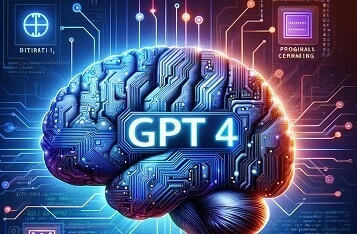The realm of artificial intelligence (AI) and machine learning (ML) is constantly advancing, yet it’s not without its stumbling blocks. A prime example is the performance degradation, colloquially referred to as ‘stupidity’, in Large Language Models (LLMs) like GPT-4. This issue has gained traction in AI discussions, particularly following the publication of “Task Contamination: Language Models May Not Be Few-Shot Anymore,” which sheds light on the limitations and challenges faced by current LLMs.
Chomba Bupe, a prominent figure in the AI community, has highlighted on X (formerly Twitter) a significant issue: LLMs tend to excel in tasks and datasets they were trained on but falter with newer, unseen data. The crux of the problem lies in the static nature of these models’ post-training. Once their learning phase is complete, their ability to adapt to new and evolving input distributions is restricted, leading to a gradual decline in performance.

Source: DALL·E Generation
This degradation is especially concerning in domains like programming, where language models are employed and where updates to programming languages are frequent. Bupe points out that the fundamental design of LLMs is more about memorization than understanding, which limits their effectiveness in tackling new challenges.
The research conducted by Changmao Li and Jeffrey Flanigan further supports this viewpoint. They found that LLMs like GPT-3 demonstrate superior performance on datasets that predate their training data. This discovery indicates a phenomenon known as task contamination, where the models’ zero-shot and few-shot capabilities are compromised by their training data’s limitations.
Continual learning, as discussed by Bupe, emerges as a key area in machine intelligence. The challenge is developing ML models that can adapt to new information without compromising their performance on previously learned tasks. This difficulty is contrasted with the adaptability of biological neural networks, which manage to learn and adapt without similar drawbacks.
Alvin De Cruz offers an alternate perspective, suggesting the issue might lie in the evolving expectations from humans rather than the models’ inherent limitations. However, Bupe counters this by emphasizing the long-standing nature of these challenges in AI, particularly in the realm of continual learning.
To sum up, the conversation surrounding LLMs like GPT-4 highlights a critical facet of AI evolution: the imperative for models capable of continuous learning and adaptation. Despite their impressive abilities, current LLMs face significant limitations in keeping pace with the rapidly changing world, underscoring the need for more dynamic and evolving AI solutions.
Tags: Insights
